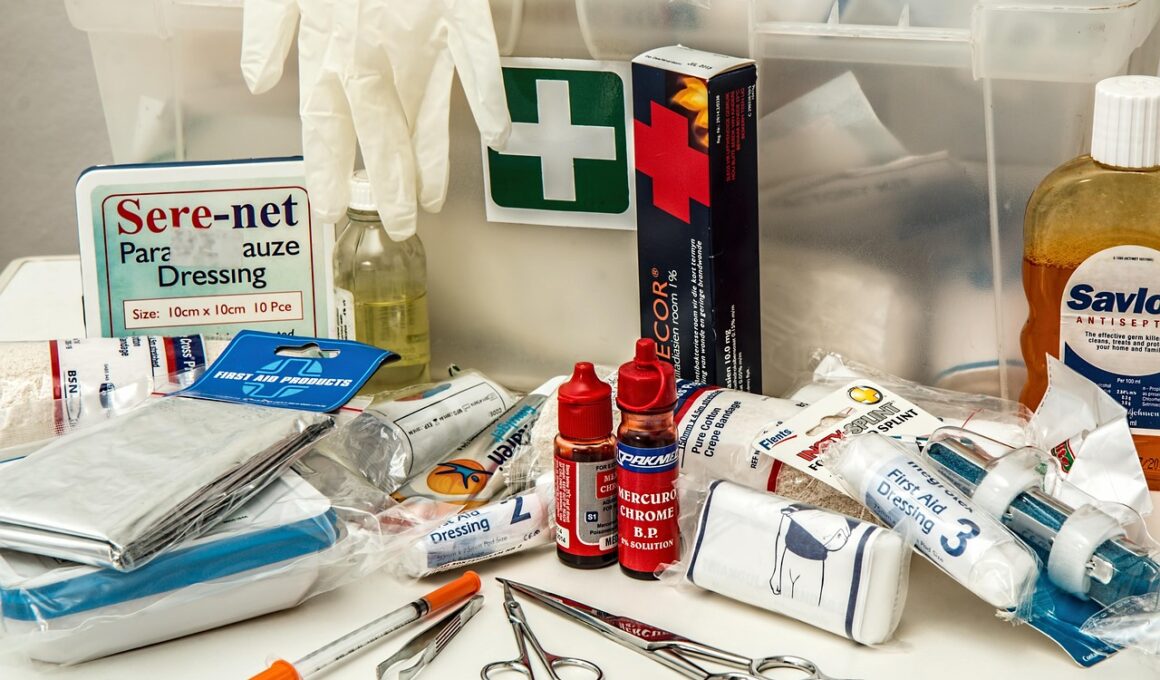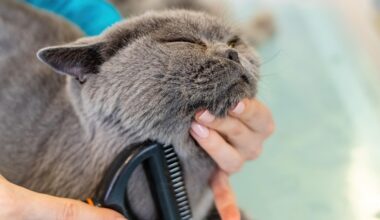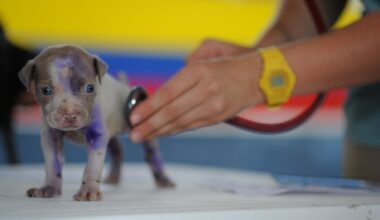How to Perform First Aid for Cats in Critical Situations
In emergencies involving cats, immediate action is crucial. Quick first aid can save a cat’s life when executing emergency procedures. Assess the situation to identify any dangers to yourself, bystanders, and the cat. Keep calm and collected to avoid worsening the situation. If the cat appears conscious and responsive, approach slowly and gently. Reassure the cat with a soft voice to prevent further stress. Examine the cat carefully, but avoid areas where the cat shows signs of pain. If the cat is unresponsive, check for breathing or heartbeat. If the cat is not breathing, commence rescue breathing immediately. Position the cat on its side, gently blowing into its nose after sealing its mouth. Continue until help arrives or the cat begins breathing on its own. In cases of severe bleeding, applying direct pressure on the wound is vital to minimize blood loss. If you collect pop-up comments or have questions about this process, consult an emergency vet or visit ASPCA for additional resources on emergency cat care.
When performing first aid for cat injuries, certain tools are essential to include in your first aid kit. Be well-prepared with supplies that are beneficial in critical situations. A well-organized first aid kit ensures you have immediate access to necessities. Consider including items such as sterile gauze, adhesive tape, a digital thermometer, and scissors. Additionally, incorporating antiseptic wipes enables you to clean wounds effectively. Tweezers can assist in removing splinters or small debris, while an emergency blanket provides warmth and comfort to an injured cat. It’s equally important to have hydrogen peroxide for cleaning. Ensure any medication administered is safe and appropriate for cats. Your first aid kit should be easily accessible, so emergency contacts, including your veterinarian, should be readily available. Visit the store or shop online to acquire the necessary items. Stock your kit regularly to ensure supplies won’t expire when needed. Keep your cat’s specific needs in mind while preparing your kit. Remain calm while managing injuries. Familiarize yourself with various emergency procedures through online resources or workshops to enhance your confidence in emergencies.
Understanding common cat emergencies is essential to recognizing when first aid is required. Various situations can arise unexpectedly, requiring prompt action to minimize the risk of harm. Some frequent emergencies include choking, severe bleeding, and trauma from falls or vehicle accidents. Observe your cat closely; signs such as difficulty breathing, excessive drooling, or unconsciousness require immediate attention. Choking can occur when cats swallow a foreign object or food pieces. In such cases, utilizing the Heimlich maneuver, adapted for cats, can help dislodge the obstruction. For bleeding, maintain pressure on the affected area and elevate it if possible. In incidents of trauma, ascertain the cat’s mental state and avoid making sudden movements. Any injuries like fractures should not be moved unless necessary to prevent further damage. Get your cat to a veterinary professional quickly following initial care. Non-critical injuries should still be assessed but allow time for it to be safely transported. Ultimately, recognizing these emergencies will help provide adequate care to ensure your cat’s well-being until professional assistance is available.
Choking and Breathing Issues in Cats
Choking incidents in cats can be frightening, and knowing how to respond effectively requires specific knowledge. Recognizing the signs of choking is crucial, such as gagging, pawing at the mouth, or an inability to breathe. If these signs occur, you must act promptly to save your cat. First, try to open the cat’s mouth to check for visible objects. If you see an obstruction, attempt to grasp it with tweezers. If you cannot reach it easily, improper removal might cause injury, so stay cautious. If your cat is unconscious, you may perform the previously mentioned Heimlich maneuver; for small cats, placing them on a sturdy, flat surface is vital. For larger cats, positioning them on the floor, it’s essential to remain calm and prevent panic. After addressing choking, observe your cat closely for any further distress or signs of injuries. Even if the obstruction is removed, seeking veterinary care is advisable to identify potential internal damage caused during trauma. Always keep emergency contact information readily available for prompt assistance when serious situations arise.
Administering first aid for cuts and wounds in cats requires special attention and understanding. Cats are prone to injuries, whether from outdoor adventures or internal conflicts with other animals. First, assess the wound carefully to determine its severity. Minor cuts can often be treated at home through cleansers and topical antiseptics. Gently clean the affected area using saline or antiseptic wipes to remove dirt and prevent infections. Avoid any solutions containing alcohol or hydrogen peroxide as they can irritate the wound further. For deeper cuts, applying gauze and applying pressure may help control bleeding. Be cautious not to apply excessive pressure, as this might cause more pain. Once the bleeding stops, you can prepare the area for a bandage. Secure sterilized gauze with tape, ensuring it remains comfortably in place but is loose enough for airflow. Monitor the wound for any signs of infection, such as redness or pus. If you notice these symptoms or the cat seems lethargic, contact your veterinarian immediately for further guidance and treatment. Understanding how to nurse your cat ultimately enhances their recovery.
Recognizing signs of shock in cats is crucial when providing first aid in emergencies. Shock can occur due to various factors, including severe trauma, blood loss, or extreme anxiety. Monitoring your cat’s physical state helps identify shock and manage the situation effectively. Common indications include pale gums, rapid heartbeat, weakness, and shallow breathing. If any of these signs occur, ensuring the cat is kept warm and relaxed helps stabilize their condition. Avoid unnecessary handling since it may cause stress, making the situation worse. When you observe symptoms, contact your veterinarian immediately to report the situation and any details regarding the injury. If possible, transport the cat to the veterinary clinic securely and calmly. While driving, ensure minimal movement by keeping your cat covered with a blanket or towel. Providing comfort is essential while you wait for professional help. Throughout the process, your composure reinforces a sense of security for your feline friend. Prevent additional trauma by avoiding sudden changes in movements. Properly understanding shock signs and initial responses provides vital support during critical cat emergencies that can eventually save their life.
Aftercare and Recovery
Post-treatment care is greatly important once a cat undergoes first aid and receives veterinary treatment. Understanding how to provide healthy aftercare is just as crucial as managing the initial emergency. After a cat is stable, creating a safe, peaceful environment is essential for their recovery. Limit physical activity, as excessive movement may stress them out and hinder healing. Offer soft food and ample water to keep them hydrated and nourished during the recovery process. Monitoring the recovery closely aids in early identification of unforeseen complications. If further medical attention seems necessary, maintaining open communication with your veterinary team is vital. Maintain routine follow-up appointments to evaluate recovery progress. Consider providing short, gentle interactions to comfort your feline throughout the recovery phase. Your cat may also need additional medications to manage pain or prevent infections, as instructed by your veterinarian. Be diligent with administering any prescribed treatment. Safeguard your cat from other pets during recovery to prevent additional injuries or stress. Promptly staying observant will ensure your cat’s successful recovery and a return to their healthy, happy self.
One of the key takeaways from understanding first aid for cats requires educating yourself further through various resources. The internet offers a wealth of information through veterinary blogs, websites, and instructional videos. You can also connect with your local animal rescue organizations. These resources are helpful to learn about specific procedures and best practices when responding to emergencies. Additionally, engaging with veterinarian professionals would provide in-depth insights into animal care. Workshops or classes can be valuable for enhancing your skills while ensuring cat safety during emergencies. They may also offer hands-on training on critical first aid techniques. Another way to gather information is through informative books about cat care and first aid. Your local library or bookstore usually has well-maintained titles dedicated to feline health and first aid. Join community discussions, forums, or social media groups focused on pet owners. Engaging with fellow cat owners can validate experiences and provide practical tips. In summary, proper education along with first aid knowledge creates a solid foundation for responding effectively during emergencies, ultimately ensuring better outcomes for their well-being.


